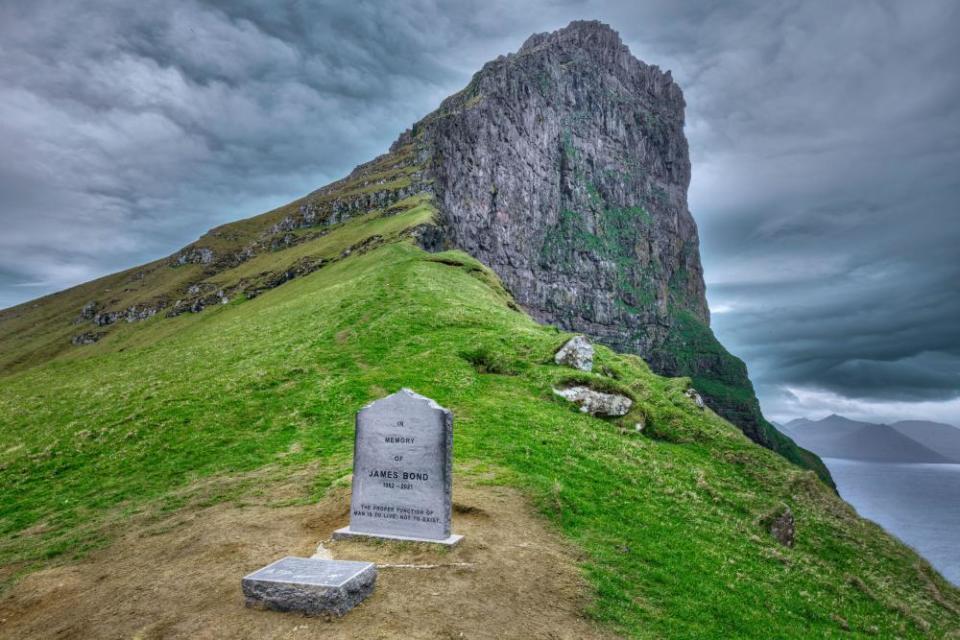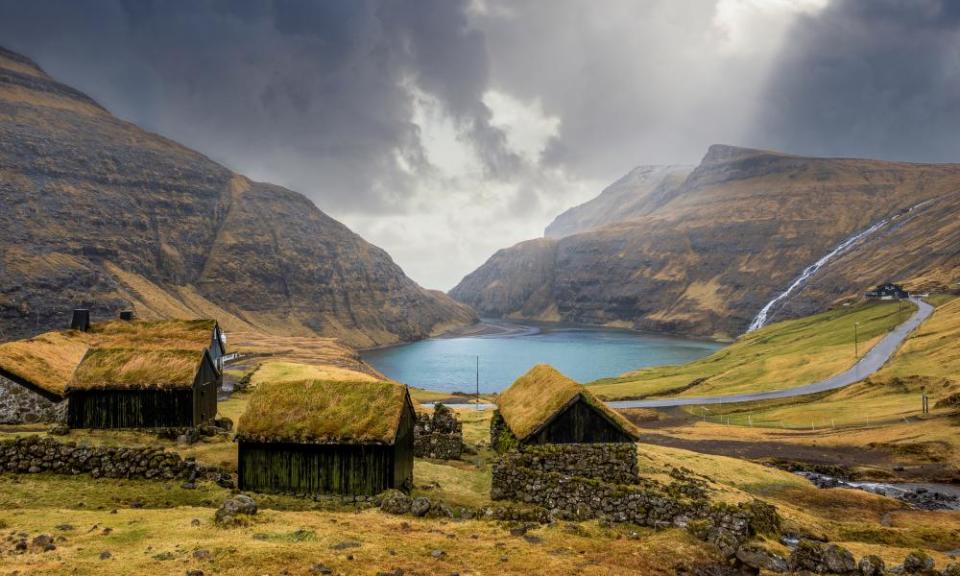The first snow fell on the sharp ridge below Víkartindur’s 700-metre peak. As we walked along the village road towards Saksun, we looked out at the ridge of peaks along the spine of neighboring Eysturoy Island. The jagged landscape was bathed in golden winter light, and in the distance the Atlantic was a giant silver mirror.
We didn’t see anyone else on the eight-mile hike, just a few white mountain hares scurrying among the rocks. Since it was hunting season, my local guide, Høgni Reistrup, had checked with local farmers that no one would be shooting where we were walking. It makes sense to hire a guide on these steep slopes, where the weather is changeable and fog can descend quickly.
The rise of tourism has been a novelty in the Faroe Islands, where it rains about 300 days a year. Numbers have doubled in the last eight years, thanks largely to innovative social media campaigns showing off craggy peaks, adorable sheep and rustic wooden houses. But whether tourists should pay to walk in these mountains and sheep pastures is a controversial issue.
Currently, anyone, local or foreign, can walk on rural village roads, but most of the places made famous by social media influencers are located on private lands where they do not automatically have the right to roam. Some farmers are now taking advantage of the ancient Faroese land law to make money from the growing number of hikers who want to explore the dramatic landscape.
Fees (usually 200 Danish kroner – around £23) have been introduced at various tourist spots, including the famous “floating lake” at Trælanipa, the lagoon at Saksun and the sea stacks at Dunnesdrangar. Next summer, there are plans to charge hikers for the hike to the 880-metre Slættaratindur, the highest peak in the Faroes. Meanwhile, Mykines, the westernmost island, has already introduced a £60 tourist fee and restricted access to puffin nesting grounds, which attract thousands of visitors. Landowners say the money was given as compensation for damage to farming and wildlife.
Tourism currently generates around £100 million a year (about 6% of the islands’ GDP). There are only 55,000 Faroese, but the number of visitors is around 110,000 annually, with most coming in June, July and August. This figure includes about 40,000 people who visit for a few hours on cruise ships. A new tourism strategy launched this month aims to make the most of the idea that the islands embody the concept of “Heim” (home) for visitors and locals alike.
Guðrið Højgaard, director of Visit Faroe Islands, says the aim is for local people to own at least 80% of the tourism industry. But he admits that the pace of tourism development has surprised the islands. “The last thing we want is for Faroese people to see tourists as a problem.”
As the numbers increased, I had to resort to guides. It is fair for farmers to get a share of tourism revenue
Jóhannus Kallsgarð, farmer
I have been walking these mountains for over a decade and have seen a degree of tension emerge between the tourism business and Faroese farmers. Two first-time hikers were recently fined by police for refusing to pay to visit one of the islands’ most popular viewing points. The incident took place on Kalsoy, which is now unofficially known as “James Bond Island” because it was used as the climax of the movie No Time to Die..
Local farmer Jóhannus Kallsgarð enterprisingly erected a granite tombstone marking Bond’s fictional resting place, and his cliff-top pastures have attracted more than 15,000 walkers this summer. This year it charged a fee of 200 Danish kroner and a shuttle bus service was introduced to ease the pressure on the small inter-island car ferry that brings visitors to the island.

“My family has been farming here for 15 generations, and during my childhood I hardly saw any strangers in the village from one month to the next. We welcome tourists and in 2019 I took over 200 walking groups to the lighthouse,” says Kallsgarð. “As the numbers have increased, I have had to work with guides to help people hike safely, as we have guests slipping and injuring themselves on the path every year. “I think it is fair that it gets a share of tourism revenue.”
I don’t like the idea of paying to visit nature. However, it is necessary to protect the land; perhaps through the government’s tourism tax
Oluva Zachariasen
There is debate as to whether too many tourists affect the landscape. Trade and industry minister Høgni Hoydal said plans would be presented to parliament to regularize public access to land. “Farming has been our lifeblood for centuries,” he says, “and our oldest written document is the 1298 ‘Letter of the Sheep’, which sets out the rules for trespass compensation. However, if tourists pay a fee or environmental tax, then we need to ensure that this money is used to protect nature. And I don’t think people should be charged for providing a service.”


According to the tourism board, politicians should decide on public access. Højgaard says: “Almost all of our land is devoted to sheep, and we recognize that our historic relationship with these animals is part of what makes the Faroes a real destination. But we are in control of how fast tourism figures continue to grow, and I don’t think we have too many.” In balance.”
The number of tourists in the most popular spots is relatively small; About 80 people climb Slættaratindur per day, and around 2,500 people ascend the mountain in August. This far north, increased boots on the ground inevitably lead to erosion.
Óluva Zachariasen is a sheep owner and hiker who founded a rural association to draw attention to the problem among Faroese hikers. “In principle, I don’t like the idea of paying just to visit nature. However, where there are large numbers of tourists or hikers of any nationality, it is necessary to protect the land, perhaps through a government tourist tax. “For us Faroese, this is an emotional cultural issue and we have a long history of disputes over grass and land on our islands.”
Provided by Gezi Faroe Islands Guide . Smyril Line sails twice a week Hirtshals With seven-night packages in Denmark including ferry (plus vehicle); Seven nights accommodation in Tórshavn £1,032 per person